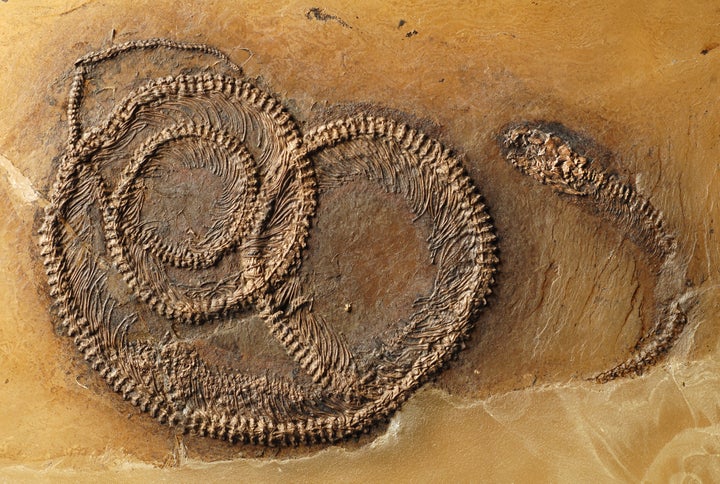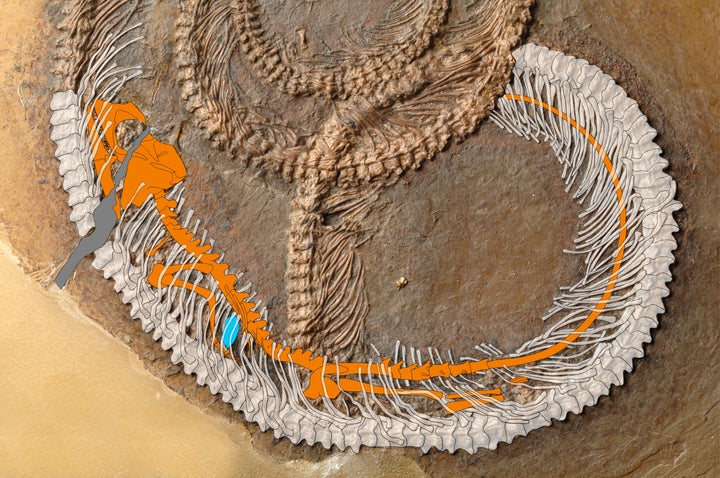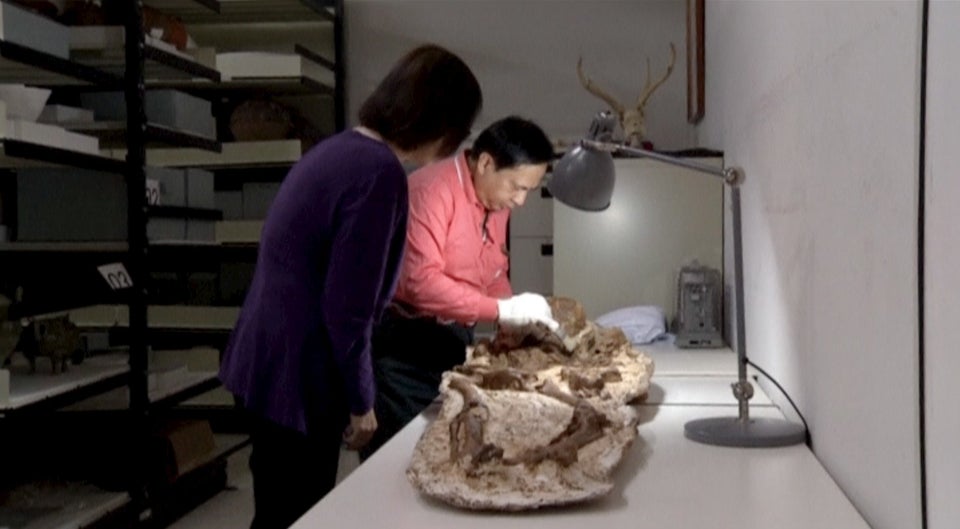
It’s the food chain as you’ve never seen it before ― unless you were around 48 million years ago.
Researchers working at Germany’s Messel Pit, a disused quarry near Frankfurt, recently discovered a fossil that shows a bug inside a lizard inside a snake.
Or as Discover magazine calls it: “essentially a prehistoric turducken.”
The magnitude of this find can’t be overstated: This is only the second time a fossil showing the culinary habits of so many creatures at once has been discovered, according to the scientific journal Paleobiodiversity and Paleoenvironments.
The first such discovery happened in 2008 in southwest Germany when researchers found a fossil of a fish inside an amphibian inside a shark.
Paleontologist Krister Smith of Germany’s Senckenberg Institute led the analysis of the snake-lizard-bug fossil and still can’t get over the find.
“It’s probably the kind of fossil that I will go the rest of my professional life without ever encountering again, such is the rarity of these things,” he told National Geographic. “It was pure astonishment.”

Researchers don’t know how the snake died. But back then, the Messel Pit was a volcanic lake with toxic waters that possibly belched out clouds of poisonous carbon dioxide, which could have asphyxiated the animal, according to National Geographic.
Another possibility is that the snake died near the lake and washed into it.
Because the lizard is so well preserved, the researchers think the snake died no more than one to two days after consuming its prey, Smith said in a press release, which was published in German. The snake then likely sank to the bottom of the lake, where it was fossilized.
The snake measures 40 inches long, which makes Smith think it was a juvenile.
The lizard was nearly 8 inches long and, despite being swallowed whole, still had an intact head crest, according to the press release. Previous fossils of prehistoric lizards found only vegetable remains. This new find suggests they may have been omnivores.
Researchers said they could not determine the exact type of bug, since it wasn’t well-preserved.
Hey, you see if you look good after 48 million years.

